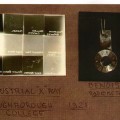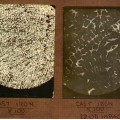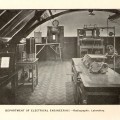Early industrial use of X-Rays at Loughborough College – 1921
19 February 2015
Although X-Rays were discovered in 1895, it was not until 1916 that they were seriously considered for the examination of engineering materials. By the end of the First World War X-Rays were being used to examine airframes, munitions, welded structures and other materials.
Loughborough College, the predecessor of Loughborough University, was one of the earliest users of X-Ray equipment for industrial applications. In September 1919 the minutes of the College Governors recorded a request from Principal Herbert Schofield to purchase equipment for the Radiographic Laboratory. Loughborough’s X-Ray equipment, consisting of a 200,000 volt coil with a Coolidge tube and localising table, was purchased from the Cox Cavendish Electrical Company Ltd for £342 13s 6d. The Radiographic Laboratory was soon renamed the X-Ray Laboratory and by 1930 much new apparatus, including a spectrometer, had been acquired.
A 1922 report on research at Loughborough College mentions the use of X-Rays to examine welds and castings and many of the illustrations for PHS Kempton’s book The Industrial Application of X-Rays, which was published the same year, were provided by Loughborough’s Radiographic Laboratory.
There was a lighter side to serious industrial research. The programme for Loughborough College’s fund-raising Empire Bazaar and Christmas Fete in 1922 includes a demonstration of X-Rays by the Head of the Electrical Engineering Department. Admission was 3d and it was ‘held behind the stage continuously during the Bazaar.’
These pages from student Harry Hopthrow’s photograph album show examples of industrial X-Ray photography carried out in the College laboratory in 1921.
Jenny Clark, Loughborough University Archives


